It has been difficult to escape the marketing hype and the countless Youtube videos around TONEX from IK Multimedia in this beginning of 2023 ! The majority of the tests and videos are rave reviews: the TONEX system would be an excellent profiling solution at an affordable price point for many guitarists, since the entry ticket is between 120 Euros for the TONEX software (using a sound card) and 480 Euros for the TONEX pedal which can be integrated into a pedal board and provides a hardware solution to use the TONEX tone models (price at April 2023). So, is it really THE ultimate solution to get access to a huge palette of sounds -faithfully reproducing tube amp tones- at a reasonable price? – Spoiler Alert –: it could well be…! Short review of the TONEX system.
Profiling or modeling ?
Modeling consists in developing and using algorithms that will generate the sound of a given amp or pedal when applied to the source signal produced by your guitar. Two main approaches are implemented: one is called “white-box” modeling and the other one is called “black-box” modeling. The first approach focuses on modeling the sound of an amp by representing all or part of the analog components of the amp, in order to simulate their behavior and increase the realism and the precision of the model. The second -black box- is not based on this representation and focuses on analyzing and reproducing the behavior globally : it aims at obtaining an accurate output signal for a given input signal.
« Profiling » was made popular by Kemper and can be put in the category of black-box modeling, using techniques to capture the behavior of a given amp or pedal-amp-cab system : the gain and volume behavior, the frequency response, the characteristics of the distortion.… The resulting profile or model is applied to your guitar signal to recreate the sound of the captured amp, with more or less precision compared to the original amp or system…
The established solutions in this field so far were mainly those of Kemper with the Kemper Profiling Amplifier (“KPA”, launched in 2012/2013) and that of Neural DSP with the Quad Cortex (launched in early 2020), with a small challenger named Mooer and his MNRS system, used mainly to capture preamplifiers (see my MNRS review/overview here if you want to learn more). And at the end of 2022, our Italian friends at IK Multimédia invested in this niche with a new solution called TONEX, making it also possible to capture amps, pedals and complete pedal/amp/speaker systems using a microphone.
Introducing TONEX
IK Multimedia presents its technology as using modeling based on techniques belonging to the field of artificial intelligence (“AI Machine Modeling“). In practice, after injecting and recording different types of signals, a processing phase examines the captured model and trains a neural network: this is probably a learning process intended to refine the parameters and the behavior of the captured profile. At the end of this phase, the profile -or “Tone Model” in the vocabulary of IK Multimedia- is finalized and is ready to use.
TONEX is available in two forms today: the TONEX software which acts as a player AND which allows you to create your own captures, and the TONEX pedal, which offers “only” the player function (the TONEX models can be loaded on the pedal with the TONEX software, in a similar approach to the Kemper’s Rig Manager, even if the Rig Manager goes much further to manage the Kemper’s parameters, which are also much more numerous).
You can choose to acquire the software part only (you will simply need a sound card with a high-impedance input to connect your guitar to it). In this case, TONEX can be used as a standalone application or as a plugin, loaded in your DAW. With the plugin you will be able to re-amp with Tone Models, directly from the DAW….Note: Overloud TH-U already allowed this with its Rig Player, but the capture system is not accessible to users…
If you choose to purchase the pedal, you will be able to use the profiles from the software as described above (the full version of TONEX is included with the pedal), and, of course, you will be able to load them and use them from the pedal itself. You will also get a basic version of Amplitude 5: this version of Amplitube has also the capability to load and use TONEX models directly.
And in any case, you will have access to ToneNET, which is IK Multimedia’s online platform: it allows users to share their models. It can be viewed via a browser (https://www.tone.net/tonex/) and the models are also accessible via the TONEX software: you can browse and download the tone models directly from the standalone application and the plugin . The free version (TONEX CS) restricts the number of downloads to 20. The paid versions allow an unlimited number of downloads. The bar of 10,000 available ToneNET models was crossed in April 2023.
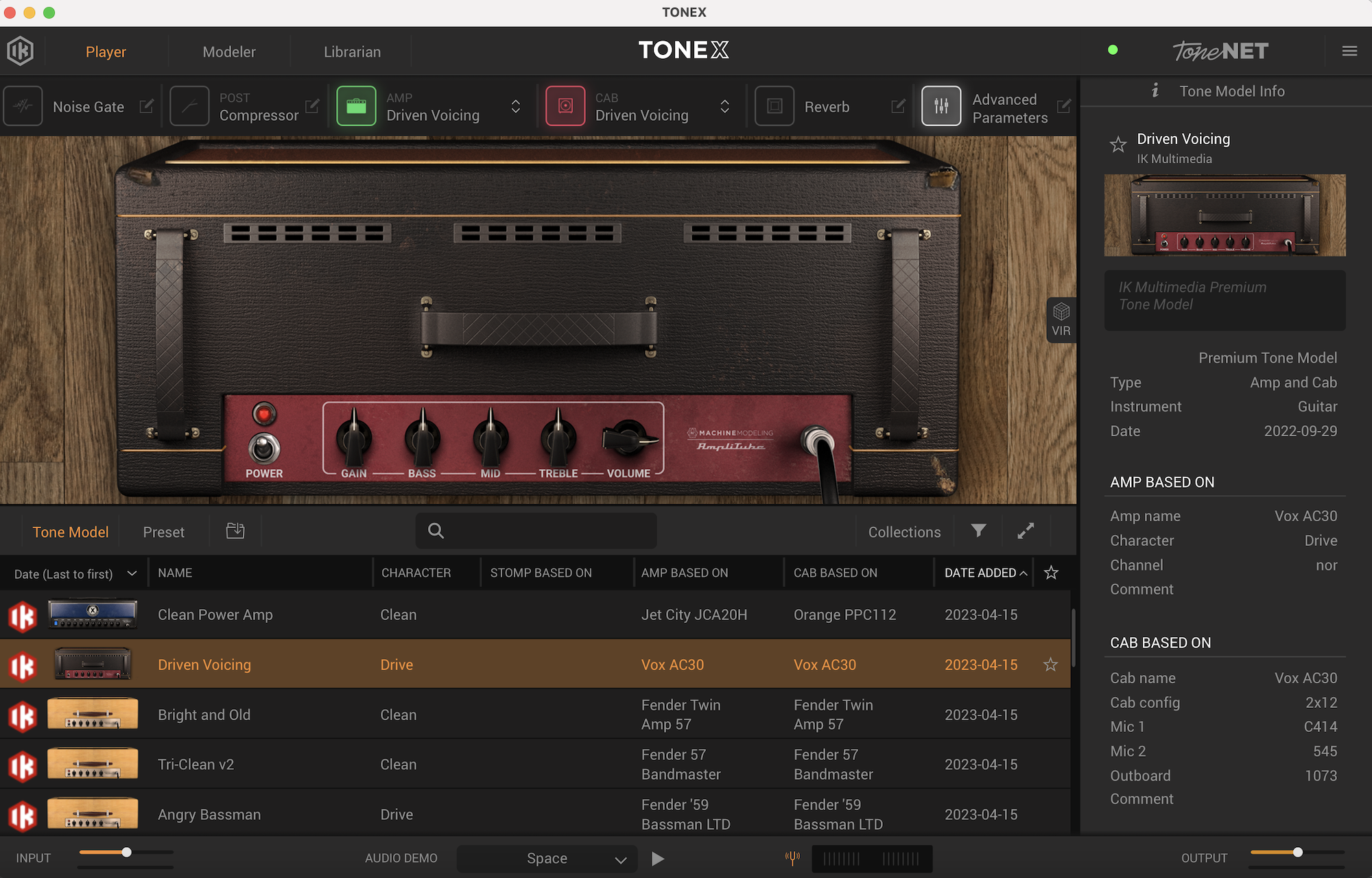
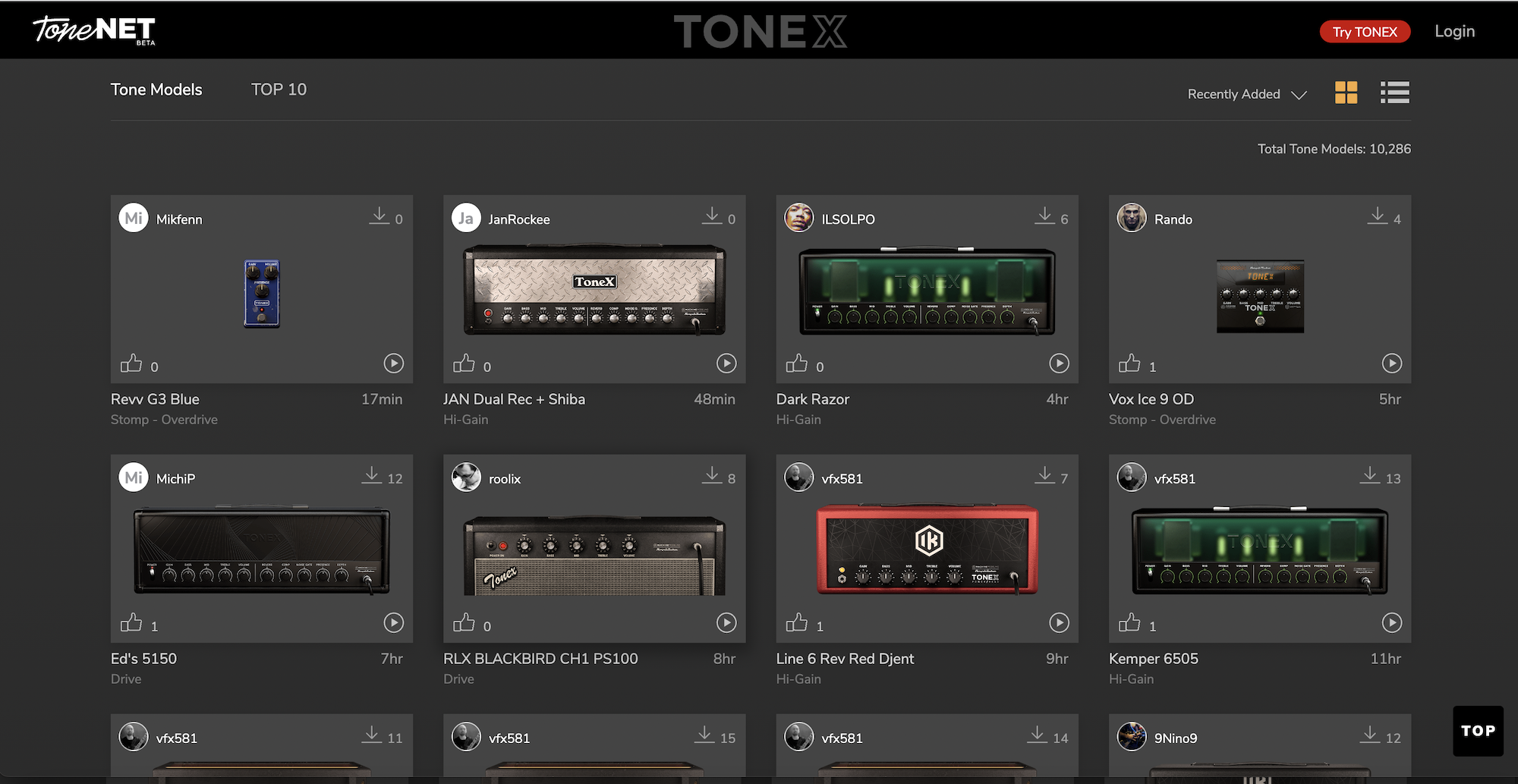
For a Beta system, it should be noted that IK Multimedia’s tone.net platform already rocks ! Good UI, smooth navigation, often providing access to an audio extract of the Tone Model, thumbnail mode, list mode, sort by recent, popular or alphabetical model… it’s really usable !
How does it sound ?
As for other systems using this approach, the results obtained are directly linked to the quality of the models that you will choose to use and the association of these models with CABs or IRs when it comes to using amp DI captures (direct amp profiles, without a cab section) …Like 99% of users, I started by browsing and testing the « factory » profiles offered by IK: some clean, some crunch / mid-gain, and of-course the high-gains…: there is a very wide range of sounds available as standard, some objectively better than others….but I found them to be globally of a good or very good quality level, with certain captures that I found really interesting and usable… The full version of TONEX delivered with the pedal includes 1100 (!!) premium profiles, comprised of full profiles, amps only profiles and pedal only profiles.
I then tested community profiles: there are already very good profiles available there… (and sometimes also not so good ones 🙂 ). And finally, I went on and created my first captures, with amps that I know well, starting with my Randall EOD and my Dual Rectifier…: the IK system captures and reproduces VERY faithfully the sound of the amps. The models feel also good and react well to the pick attack and the volume pot, whether using the TONEX pedal or plugging a guitar directly into my sound card.
The quality of the sound produced by the IK Multimedia system is of a very good level, and I found the distortions to be reproduced well. By profiling your own gear, you may observe that the top-end seems to be a little bit processed and a little bit smoothed compared to the real thing (amp and cab in the room) and it seems to me that you lose a bit of shine and richness, but in the end it remains very close to the original and this makes the model easier to use, especially with very high gain levels (less hiss and brilliance). The hardware used for capture must also certainly have an impact on this aspect, especially for DI amp profiles, which capture a line level conversion of the amp output. And then, it remains very difficult to compete with a real tube amp and a cab in the room: the different approaches of modelers and amp simulations are based on sound picked up via microphones and reproduced via FRFR speakers or monitors: a lot of elements that differentiate the sounds and the dynamics obtained with a real amp…. Still, the results of the TONEX system are truly remarkable.
In any case, the models react rather well to variations in attack and to the volume of the guitar, and provide good playing sensations, with a sound quality that is quite impressive and close to the original sound. Gain level is also well managed, and the system supports well the addition of hardware pedals (boosts, overdrives).
Some samples
The first playlist below illustrates the sounds obtained with IK profiles delivered with TONEX:
The second playlist uses my own captures:
- DR CH3 GOV : Precision Drive, Dual Rectifier CH3, Fatboy Governor, SM57, complex rig
- DR CH3 H75 : same rig, excepted the G12H75 speaker
- DR CH3 IR Demon : Dual Rectifier amp DI , paired to an Overdriven Fatboy Demon IR
- EOD FB GOV : Precision Drive, Randall EOD, Fatboy Governor, SM57, complex rig
- EOD FB GOB H75 : same rig, Governor and G12H75, with 2x SM57
- EOD IR Demon : EOD amp DI, paired with an Overdriven Fatboy Demon IR
You can also check the many Youtube videos already available, and do not hesitate to go and audition demos directly on https://www.tone.net/tonex.
The capture types
I won’t go into a detailed explanation of the capture process here – maybe I’ll do it in a future blog post -: I’ll just present the different types of captures that you can use and create by yourself. You can also consult the dozens of Youtube videos already available on the subject, especially if you plan to capture your own gear… In the context of an introduction, we can simply state that the capture procedure is very assisted, fully automatic (it does not require a phase of refining the profile, as on the Kemper), and it is globally easy.
There are 5 capture types :
- amp only
- pedal + amp
- pedal only
- amp and cab using one or two microphones
- complex rig (pedal(s), amp and cab), using one or two microphones
The first three types of captures will produce tone models without cab : to use them, you will have to associate them either with one of the TONEX cabs, or with a VIR (IK Multimedia IRs with microphone positioning, with up to 2 of the 3 microphones available: a 414, a 57 and a 121), or even a third party IR that you can load in the software and on the pedal. You will then be able to store this association as a preset. Pedal type captures allow you to model a pedal, for a given set of settings: in this case your TONEX profile simulates the pedal and you will have to insert this tone model into a more complete chain (with an amp or another system behind the TONEX, in order to be able to have a complete pedal-amp-cab stack). In a DAW, nothing will prevent you from positioning several TONEX instances in series: for example, one TONEX instance loading a pedal, the other instance loading an amp/cabinet profile, and of course, you will have the opportunity to position other plugins of your choice, before and after the TONEX plugin : your own and favorite IR loader (disable the cab block in the Tonex plugin if you do this), your favorite effects, EQs, etc….
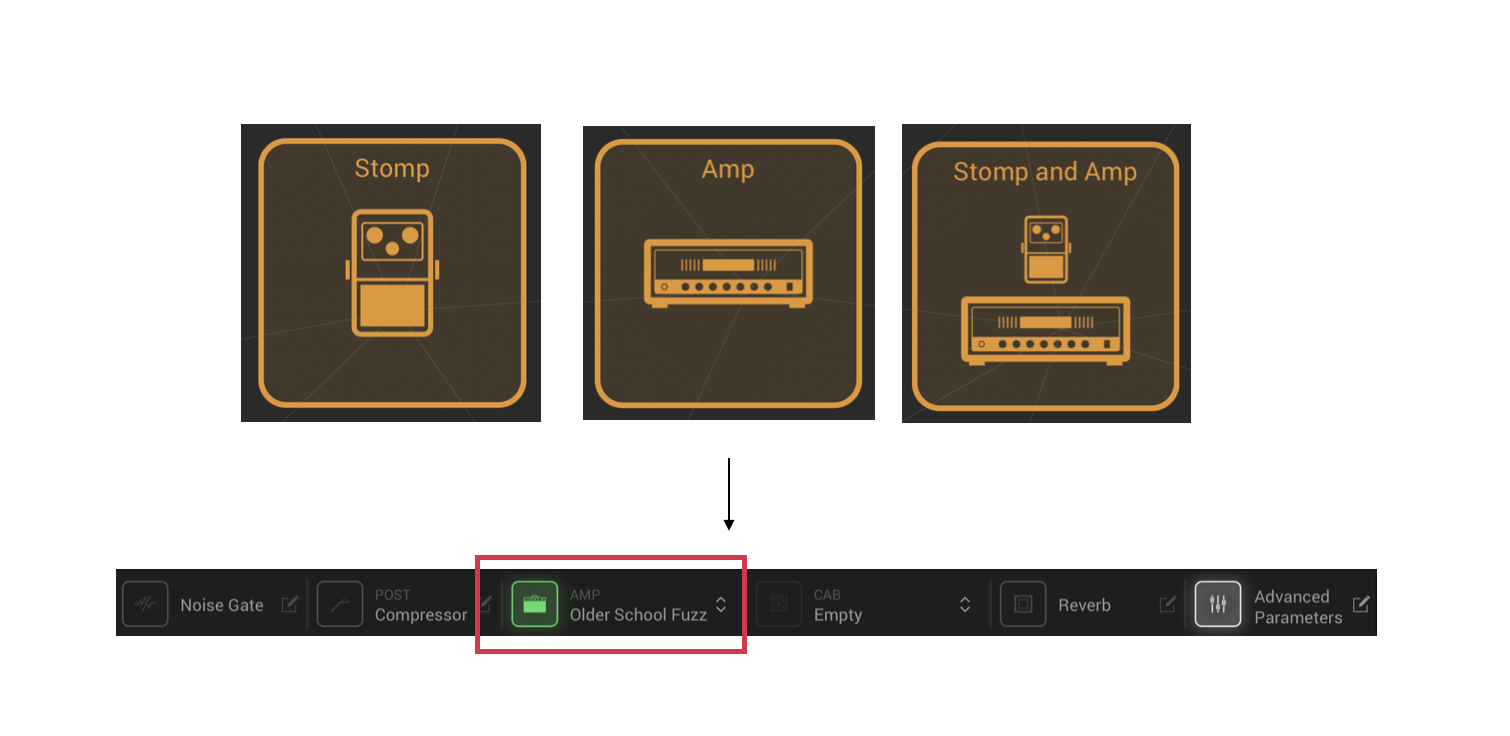
The last two types of capture (amp and cab / complex rigs) are similar to Kemper’s “Studio Profiles”: it is an end-to-end capture containing the entire tone chain. These amp+cab captures are more complex to create because they involve some sound recording with a microphone, but they can give very authentic results, when done well. The amp-only captures are certainly more versatile than the complete captures -and technically easier to achieve-, but you will then have to make the cab/IRs associations to obtain the sounds that interest you… If you are already used to this approach with IR loaders, you won’t have any problems with using these types of models in TONEX.
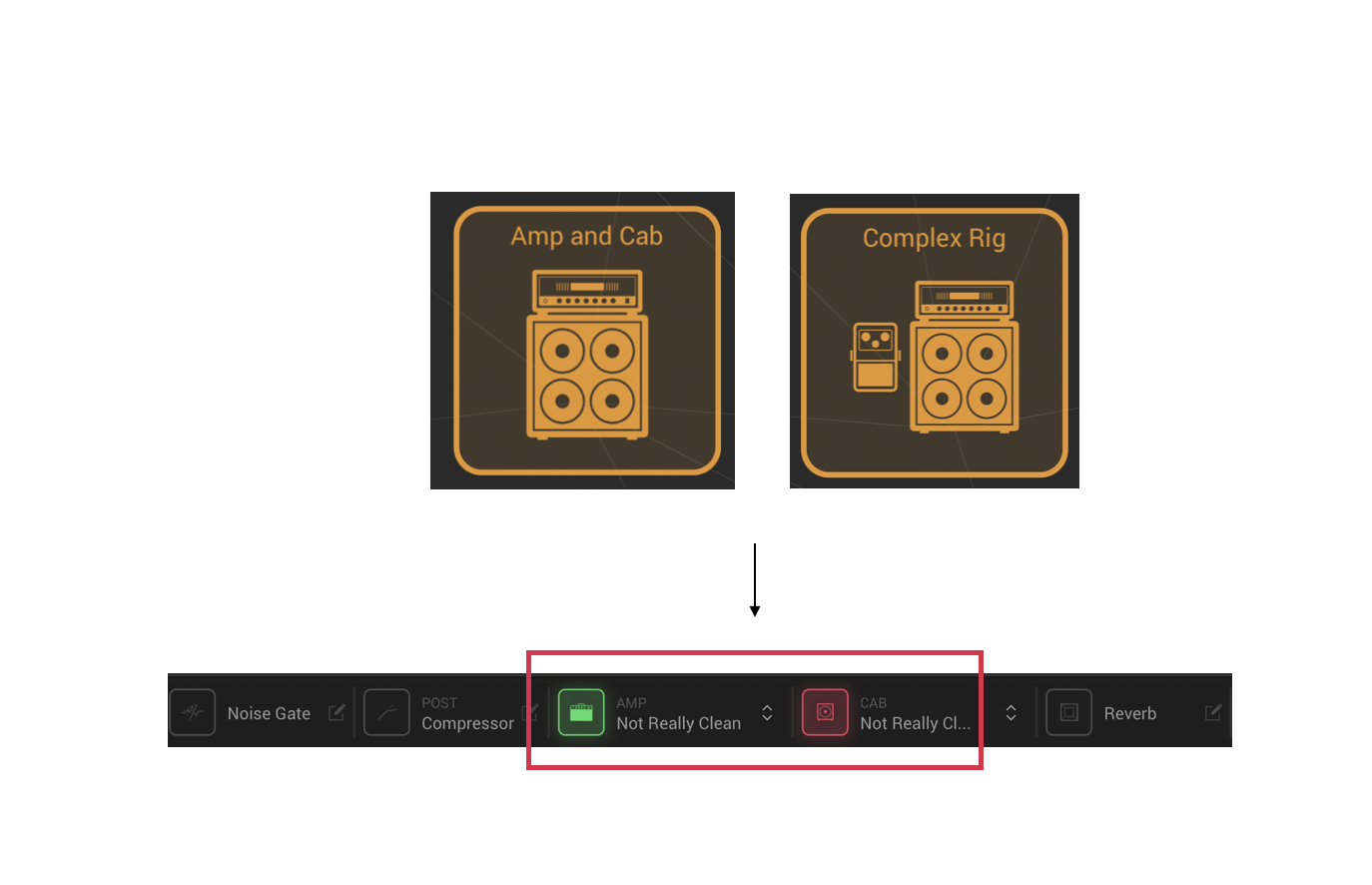
Even when you use a complete profile, you have the option of disengaging the original cab and to replace it, either with an IR or with a cab from another profile (it’s a bit like the ” cab driver” from Kemper, which separates the amp part from the cab part). And it works quite well !
All these profiles are static: the capture is based on the settings of your pedals and amps at the time of capture. You can then add corrections, in particular gain and equalization, but these are post-capture changes: these settings works quite well in TONEX, especially if you are not making extreme corrections (like mids to zero or bass to the max). Of course, this does not have the same impact as a correction on the amp or on a pedal, the capture process being able to represent “only” what was recorded… This is the limit inherent in this approach. : you will rather audition and search for profiles to find a particular type of sound, the gain / EQ settings allowing you to refine the tone a little bit and adjust the capture to your own equipment (guitar pickups, signal level,…)
IK Multimedia also offers a capture box called TONEX CAPTURE: you can create amp profiles using this box, but other DI boxes or load-boxes can be used.
My first capture experiments were successful: the process itself is simple and automated and I found the results to be very good, quite faithful and very usable (captures of complete rigs overdrive-amp-cab-mic(s) and captures of amplifier DI, paired with IRs).
The TONEX software
The software is rather well made and provide all the essential features. You will sometimes have to search a little bit in the UI, and get used to its ergonomics (I had some trouble finding the VIR parameters, for example).
To begin with, the user chooses the main mode from the menu at the top of the screen: Player, Modeler or Librarian.
The player mode allows you to browse and use the tone models and can generate presets from the basic models. The modeler mode allows you to make your own captures, and the librarian mode allows you to manage the pedal presets (import/export/backup…). Added to this is the integrated access to ToneNet, the online sharing system, which will allow you to access the tone models shared by other users, and allow you to upload your own models to make them available to other users, if desired.
In player mode, you can select between two tabs :
- the Tone Model mode: in this mode your current settings (gain, tone stack, reverb, etc.) apply to the selected model. The complete profiles can be used directly, for the other types of profiles, you will have to associate a cab. You will lose this association if you browse and select another tone model. To capture your association (cab) and your parameters (gain, eq, reverb…), simply create a new preset from the current configuration of your tone model.
- the Preset mode: select a preset, which can be modified and saved. The preset will allow you to maintain and recall all the parameters of your rig, in particular the CAB or the selected IR.
The TONEX signal chain is made of the following blocks :
- A noise gate
- A compressor that can be placed at the beginning of the chain or at the end of the chain (PRE/POST)
- The amp or pedal block
- The cabinet block
- A reverb that can be Room, Spring or Plate

There is also a control block which includes equalization (with the possibility of changing the central frequency of the bass, mids and treble and also modifying the Q factor for the mids) as well as a presence, depth and mix control (acts like a global DRY/WET setting).

This already provides a lot of possibilities to adjust the model and adapt it to your tastes and your gear (guitar and pedals).
Some profiles already include an overdrive or a boost (or they can already have a high level of gain) and you can have good results with your guitar connected directly, without any pedal. But nothing prevents you from using your own pedals or simulations before the TONEX to boost and shape your signal: the software and the pedal react well to this type of setup. This will certainly be especially useful when the tone model does not already include a drive or a boost of some kind.
A good idea also is to have integrated a small player which allows to play a set of small pre-recorded riffs (different styles and probably different guitars): it allows you to audition the tone models quite easily and quickly to get an idea…: very practical and very fun when exploring the many models available.
The software also allows you to apply filters to refine the list of displayed models and presets. A few additional filters could be welcome, because the lists are likely to grow longer 🙂: we can bet that IK Multimedia will be able to propose changes and improve its software over time. For an initial version of the product, it is already very usable.
Only one regret for the moment, from my point of view : the capture mode automatically switches my sound card to 44.1 kHz: I don’t know if it’s a technical limitation or a problem related to my configuration . We would have liked to be able to capture with higher resolutions, but the quality that I obtained in my captures already seems very satisfactory to me…
Note also: when exporting/importing presets between several machines, I noticed that the presets using custom IRs were not fully processed, omitting the IR in question (which I therefore had to import manually on the TONEX destination, forcing me to reconfigure the preset by pointing the IR at the destination TONEX). No worries on the other hand between the software and the pedal, everything is transferred correctly.
The TONEX pedal
It is quite compact and it seems quite robust. It comes in a small box with its power supply (9 volts), a USB cable and a card containing the registration key allowing access to the associated software (TONEX and Amplitube).
Here are the main features:
- 123 dB dynamic range
- Frequency response from 5 Hz to 24 kHz, internal 24-bits / 192 kHz converters
- USB2 connection for transfers and operation as an audio card (24 bits / 44.1 kHz)
- 1 instrument input, 2 main outputs, 1 headphone output (6.35 jacks)
- 1 expression pedal input
- 2 MIDI connectors (in/out)
The pedal has 150 preset slots, organized into 50 banks of 3 presets. The pedal and the software produce the same tone : I did not notice any difference between the two systems. On the latency side, it’s imperceptible (latency would be 3 ms, see Leo Gibson’s video on this subject, link at the end of the article). The pedal therefore does a good job and let you the use the models in a compact, transportable format that can be integrated into a pedal-board. It is simple to use but I found it in the end a bit tedious in editing the preset parameters (you can easily activate the compressor by using the wrong potentiometer for example…)
I expected to be able to manipulate these parameters directly from the TONEX software (as one can do with the Rig Manager on a Kemper profile), but this is not supported, at least for the moment: the software let you export and import the presets to/from the pedal, export (backup) and import (restore) the library of presets or update the firmware…. but it does not support the direct editing of the preset parameters on the pedal… You will therefore have to adjust these presets by directly using the buttons on the pedal (and then you can save changes into the pedal preset).
To take advantage of the models correctly and get a great tone, it is important to enter the pedal with the right signal level (guitar connected directly or via a boost pedal or other): for this purpose, the pedal has a global setting called TRIM INPUT which allows you to adjust the input gain between -15dB and +15dB.
I tested the pedal on home studio monitors (Yamaha HS7) via my sound card, and with headphones (DT880): the rendering seemed very good to me….
I did not find any specifications in the IK Multimedia documentation concerning the supported length of IRs (for TONEX software or pedal, no more than Amplitube….). Since the rendering of the IRs I used sounded pretty accurate to me, I guess the supported length is at least 1024 points, maybe 2048.
Notice the absence of an auxiliary type audio input: it’s a shame we could have had a standalone system to practice over a song or a backing track…
In some forums or in some Youtube videos, some regret the lack of an effect loop on the pedal : we could argue that you can always use boost and overdrive pedals before the TONEX pedal, and route the TONEX output to reverbs, delays and other chorus pedals…. And you can always do the opposite: one could insert the TONEX pedal in the effects loop of a Helix, a Kemper or any other multi-effects with such a loop…
Conclusion
IK Multimedia is offering a quality capture system for an affordable price: if you opt for the software alone (120 Euros for the basic edition), you have access to a quality capture system for a fraction of the price of the solution from the tenors of the sector (Kemper and Neural DSP) and you have access to an already impressive palette of sounds, which will be enriched over time. It should be noted that the system is very successful and functional, and this already from its very first versions… The ergonomics of the software could -still- be improved a little bit… The pedal is also interesting if you want to have a stand-alone solution and integrate it in your rig: it offers a good rendering and it includes the complete edition of the TONEX software (edition which was recently on sale at around 200 Euros on its own), the pedal being offered at 480 Euros. The solution proposed by IK Multimedia therefore democratizes access to a huge and -potentially- high quality range of sounds and this is excellent news for the guitar players community….
If we had to formulate some shortcomings or points to improve, we could mention the following points:
- add a low-cut and a hi-cut
- add a global output EQ (soft and pedal)
- direct edit of the pedal presets with the software
- enrich and improve filters and sorting in the software for modules and presets (ranking, labels, collections, etc.)
- a queue system for captures to be processed, to run learning in deferred mode, possibly in batches (15 minutes to 1 hour of processing on very recent equipment)
- custom IRs do not seem to be taken into account when exporting/importing presets
- the possibility of declaring folders of IRs to “mount” sets of IRs in the software, to simplify the selection and allow pairing amps and IRs in an easier and quicker way..
- use the “cab name” field to display the list of cabs rather than the name of the tone model (i.e. which cab is behind “50 years ago” or “Another valley”?)
- possibly an on / off button on the pedal….
- …. and add a cache to the app and plugin to keep the list of tone.net models and make it easier to navigate in ToneNet searches.
Many videos also praise the fidelity of the results obtained with TONEX by comparing it to the Quad Cortex and the KPA (Kemper): I invite you to watch the video from Leo Gibson who used a quite scientific approach to compare them… The video from Mendel bij de Leij is also very interesting.
The fidelity of the capture to the original sound may not be everything, though : the two other solutions (i.e. Quad Cortex and Kemper) being also more complete and more sophisticated (effects, settings, functionalities,……) and also having large libraries of quality sounds, especially the Kemper, with its 10 years of existence… By the way, let’s say that IK could be well inspired by investing the niche of more complete multi-effects: imagine the functionality and rendering of TONEX in a Helix LT-style format, with the power to run two or three profiles (e.g. pedal capture and amp capture), routing and good quality effects: it would probably become a very successful device !
Many have already taken an interest in the IK Multimedia system and are beginning to offer paid packs for TONEX, which will complement the models offered by IK and those of the tone.net community: see for example the offers from Choptones on this link, or the stores of different YouTubers like Tone Junkie (https://tonejunkiestore.com/tonex) or Jason Sadites (https://www.sadites.com/tonex-presets). This illustrates the enthusiasm generated by this new platform….
Approaches based on captures require auditioning and accumulating a large number of profiles, of sometimes very variable quality and interest: the profiles remain “snapshots” of a configuration of an amp/ speaker/mics. Some will prefer to use systems offering a “real” modeling of the behavior of an amp and its parameters (EQ, gain, sag, etc….), in order to better sculpt and control their sounds and their results…. while others will be delighted to be able to access the possibilities and sounds offered by the IK Multimedia capture system, and this for a very affordable price. An avalanche of possibilities for guitarists !
Video Links
Real Amp vs TONEX vs Kemper vs Quad Cortex Comparison / Mendel bij de Leij : https://www.youtube.com/watch?v=Avhih6805YU
Leo Gibson : https://www.youtube.com/watch?v=zV8pQxEwo_o et https://www.youtube.com/watch?v=fVB_WWsgnHo (NAM vs ToneX vs Quad Cortex vs Kemper: can a free plugin beat paid solutions)
Change log
- Created : April 30, 2023
- Updated : May 1, 2023, typos
- Updated : May 3, 2023, typos
- Updated : May 7, 2023, typos
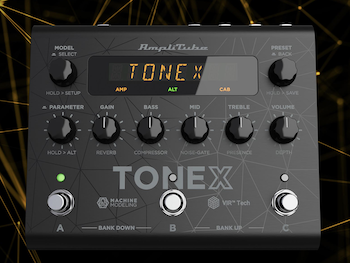
Leave a Reply